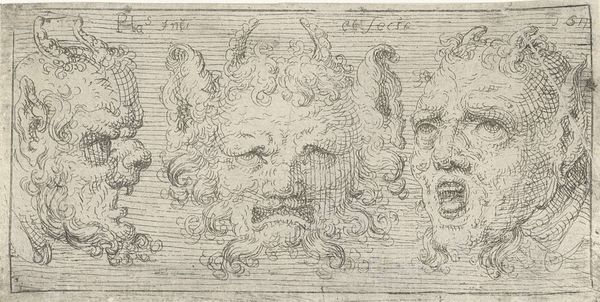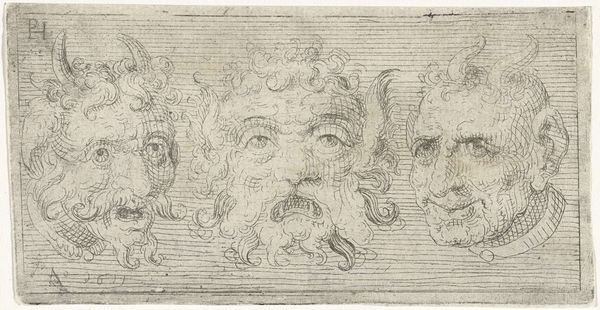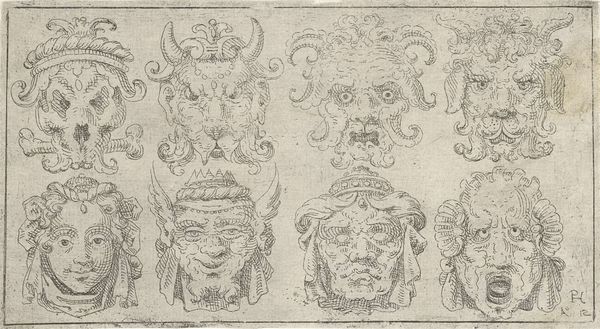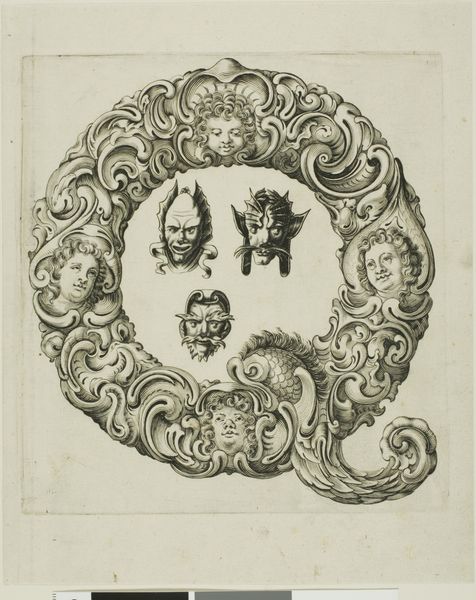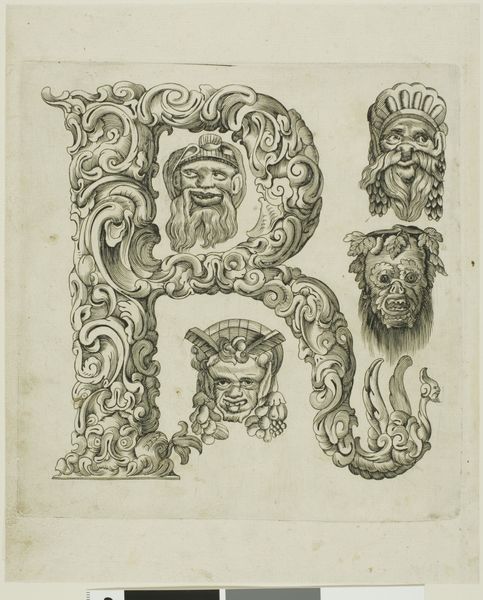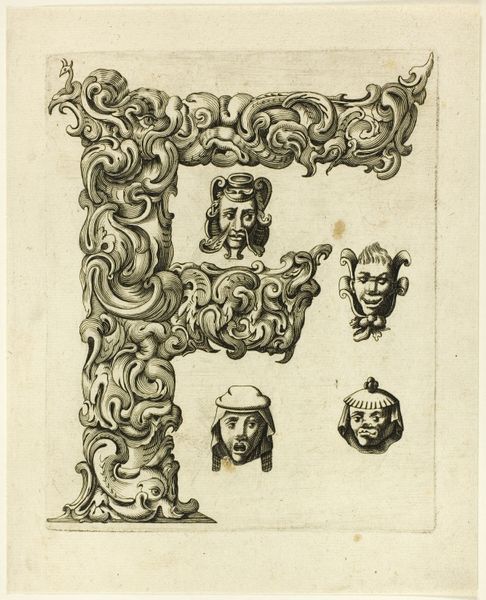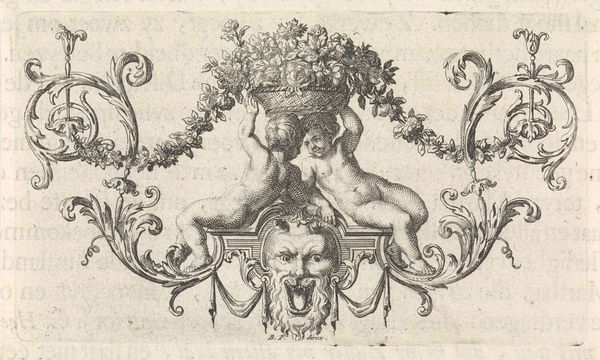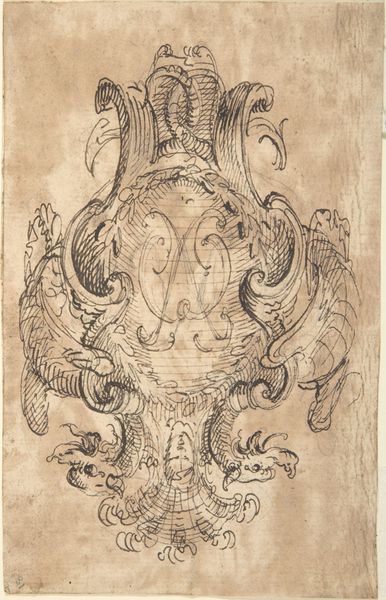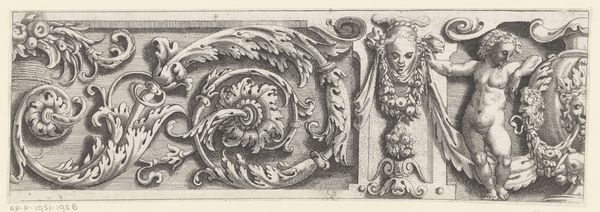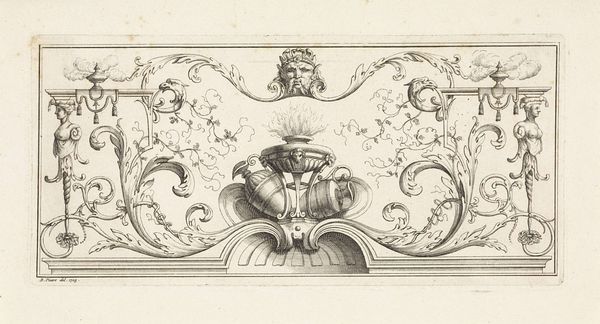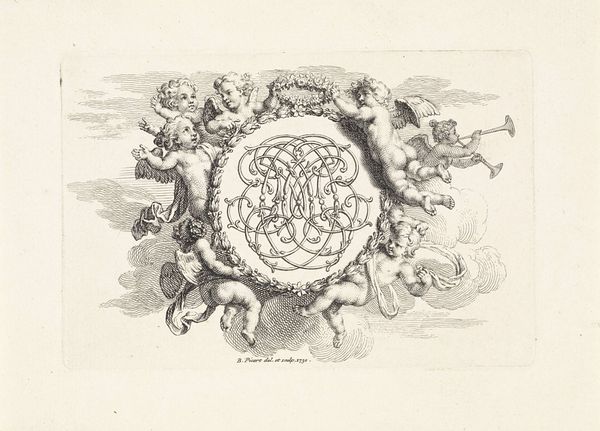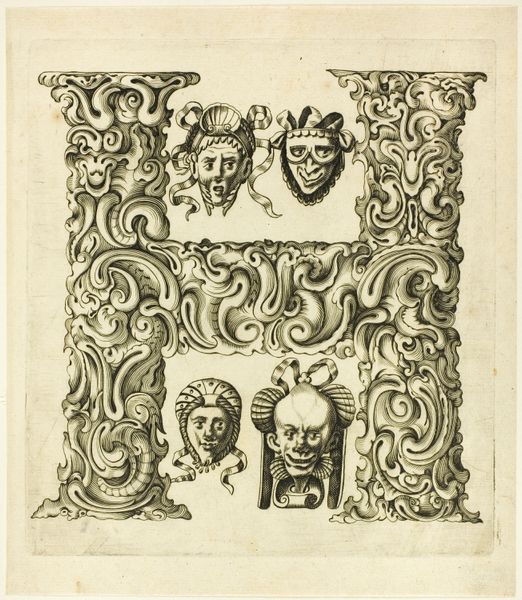
drawing, print, engraving
#
portrait
#
pencil drawn
#
drawing
# print
#
pen sketch
#
figuration
#
line
#
northern-renaissance
#
engraving
Dimensions: height 58 mm, width 115 mm
Copyright: Rijks Museum: Open Domain
Curator: Here we have "Three Masks Without Horns" by Pieter Feddes van Harlingen, created around 1611. It's an engraving. What are your first thoughts? Editor: Intriguing. They seem like studies of imagined characters. Look at the way the lines scratch into the plate, making me feel like these could be costume studies, like designs from a theater workshop. Curator: That’s a sharp observation. Van Harlingen was working in a period heavily influenced by the Northern Renaissance, where printmaking was not just about reproduction but exploration. The work itself served a pedagogical purpose, disseminating visual ideas. Editor: Absolutely. And consider the labor involved—each line carefully considered. This was craft as much as art, especially given the rise of print culture. It brings up the question: how were such prints marketed and consumed? Were they exclusively for elite art collectors, or was the production also tied into broader visual markets serving theater groups? Curator: Those are essential points. Prints were a crucial way of circulating imagery and knowledge in the 17th century. Their relative affordability compared to paintings democratized art to a degree. We often forget how revolutionary printmaking was in allowing artists' concepts to reach wider audiences. Think of it, not just an artwork, but a social force! Editor: Yes! And what’s so fascinating about an engraving is the intimate relationship between the artist, the plate, and the final image. You can almost see Van Harlingen’s hand pressing and guiding that burin. It would have been part of a long tradition of engraving in the Netherlands. And given how reproducible print is, what impact would it have made on the art market in Northern Europe? Curator: Good question! We see this piece as a key component in a larger network of visual exchange. Now, think about its location today, held within the walls of a museum like the Rijksmuseum—it places this utilitarian object squarely within the realm of "high art" whether that aligns with the creator's initial vision or not. Editor: Exactly. This small print leads to very big thoughts. And if it could speak, the tales it could tell...
Comments
No comments
Be the first to comment and join the conversation on the ultimate creative platform.
